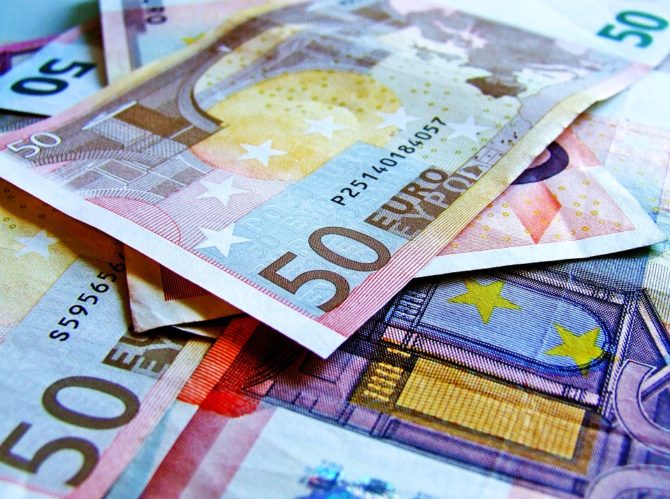Sterling Update: GBP/EUR rate reached a 2024 high this week
Here’s the latest currency news from our partner Moneycorp, to help you find out what your money is worth.
GBP
The GBP/EUR rate reached a 2024 high of 1.1735 this week, a four-month high and in line with levels not seen since September 2023. This is less than half a cent below the currency pair’s annual high of 1.1780 in 2023, which could be attractive to euro buyers.
Sterling dollar has seen little movement so far this year and has remained rangebound around 1.27 levels. This may be shaped, in part, by contrasting data that came out last week.
It has been a quiet week for economic data in the UK, with only this month’s Manufacturing and Services Purchasing Managers Index (PMI) figures released on Wednesday. Data came in higher than expected for both metrics.
Markets expected a slight improvement from the Services data, which was anticipated to come in at 53.2 (above the critical level of 50). However, the data revealed a stronger upturn in private sector output than expected, landing at 53.8. The UK’s Manufacturing PMI is still lagging below the 50 threshold but came in above the anticipated 46.7 at 47.3.
As a result, the Flash UK PMI Composite Output Index (which combines Manufacturing and Services) reached a seven-month high of 52.5, up from 52.1 in December.
The improvements in these indicators could positively impact the overall economic outlook, which could strengthen the Pound. There was some indication of this in the aftermath of the PMI release, as GBP saw some strength against the dollar before pulling back following the release of solid PMIs in the US.
Next week, the Federal Reserve and the Bank of England will hold their monetary policy meetings on Wednesday 31st January and Thursday 1st February, respectively.
EUR
The Interbank rate EUR/USD was almost 1.11 at the turn of the year, representing the highest levels for the currency pair since last July. However, since then, it has seen continued losses and has now fallen as low as 1.08. The lowest level we saw for EUR/USD in 2023 was in September, when it dropped to 1.04. This could show the single currency can fall further if the trend continues.
After a quiet week last week, this week saw more significant releases. On Wednesday, the Manufacturing and Services Purchasing Managers Index data for France and Germany were released.
Markets expected very gentle improvements in France and Germany’s manufacturing and services sectors. In reality, although both countries’ Manufacturing PMIs increased more than expected, with Germany’s figure landing at 45.4, above the expected 43.7, and France’s at 43.2, ahead of 42.5, both of the Services PMIs were lower than anticipated. Germany’s Service PMI dropped to 47.6 from 49.3 in December (which was also expected this month), while France’s came in at 45.0, below the anticipated 46.1 and the 45.7 measured in December.
Despite the Manufacturing PMI data improvements, the figures remain below the key 50 threshold, indicating contraction in the industries.
The European Central Bank also made its latest interest rate decision on Thursday, voting to hold rates steady at 4%. This was in line with market expectations, which had anticipated only a 4% probability of a rate cut. In the subsequent press conference, the ECB’s President Christine Lagarde was adamant that it was “premature” to discuss rate cuts and doubled down on the central bank’s commitment to fighting inflation.
Reuters reported afterwards that anonymous policymakers said they were open to a change in rhetoric at the next meeting and a possible rate cut in June if Europe was further along the disinflation process.
According to Bloomberg analysis, the probability of a 0.25% rate cut in March sits at a low of 20.2%, 70.8% in April, and an almost conclusive chance of at least a 0.25% cut in June. These probabilities, taken in the context of much of the commentary we are seeing from banks and analysts, suggest that an ECB interest rate cut in June is priced in. Any cuts earlier than that will be at least a little bit surprising for the market.
The euro sunk to six-week lows following the decision.
Why Moneycorp?
With a Platinum Trusted Service Award 2020 from independent review site Feefo and 40 years of experience in the industry, FrenchEntrée has been recommending Moneycorp for more than 15 years. During this time they have helped thousands of client planning the best way to pay for their property as well as supporting them afterwards with any further payment from paying bills, mortgages to repatriating UK pension payments for those who have retired to France.
Furthermore, we have worked with the same person at Moneycorp for more than a decade! You might be familiar with her as she often writes for our French Property News magazine. She has 13 years’ experience in foreign exchange, and is a qualified European lawyer with experience in European transactions. Mar will be happy to answer any questions or enquiries to support you through these difficult times.
Opening an account is really easy and free of cost. You can register online or over the phone in a couple of minutes and for FrenchEntrée readers there are no transfer fees in any payment.
Share to: Facebook Twitter LinkedIn Email
More in currency
Leave a reply
Your email address will not be published. Required fields are marked *







